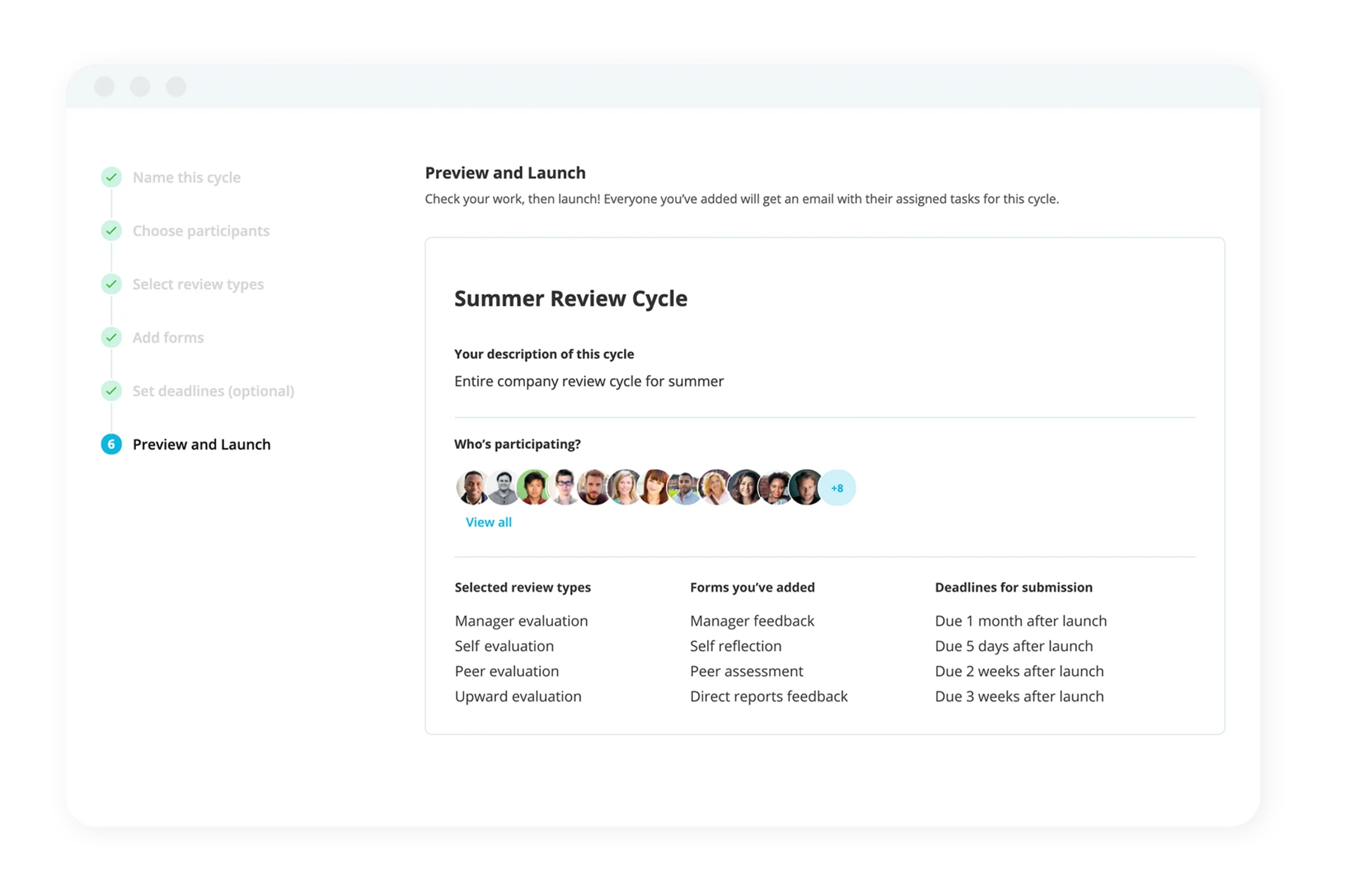2. June 2022
7 Powerful Ways to Build More Diverse Leadership in Your Organisation

If you work in HR, chances are you want to create a better environment for every employee where they can thrive, no matter what their age, disability, gender, marriage status, parental status, race, religion, sex, or sexual orientation may be.
As important as creating equal opportunities at your organisation is on a human level, it’s also essential for retention, collaboration and success. As a recent McKinsey study highlighted, employees in inclusive workplaces are 47% more likely to stay, 90% more likely to help colleagues and seven times more likely to consider their company to be high-performing.
So, where can we start to ensure that everyone gets the opportunities they deserve at work? We spoke to Loretta Eidam, Personio’s Head of Product, Design & Engineering Operations, who shares how to start building more diverse leadership throughout your organisation.
1. Recognise the Value of Diverse Leaders
For Holly Smith, Diversity, Equity and Inclusion Specialist at Personio, the importance of a diverse employee base cannot be overstated: “Across all teams, it enables creativity, more innovation and better decision-making.”
There have been countless examples of mistakes made when people do not design with a lens on accessibility and inclusivity in mind. From car safety to soap dispensers, a lack of diversity can quite often lead to poor product design for traditionally underrepresented groups.
As Loretta explains, when you design a product, you are solving a problem for a customer. Effective problem-solving requires understanding from different perspectives: “Our perspectives are influenced by our experiences and culture, so when you have a team rich in diversity by gender, personalities, cultures, beliefs and experiences, the better your chance at solving that problem for your customer.”
2. ‘Diversify’ How You Interview Leaders
If you’re not sure where to start to help diversity thrive at your organisation, take a look at your recruitment, says Loretta. “This includes everything from minimising biases during screening to having broad representation in interviews to ensuring interview questions and case studies reference names and companies from different cultures.”
Holly explains some practical ways to approach this: “At Personio, we train everyone on how to recognise unconscious biases and how to interrupt them.” Even your applicant sourcing software can help here: “We use sourcing jams (organised networking) and Boolean strings (search methods for particular attributes such as specific pronouns) to get more diverse candidates in our funnel.”
An even more simple way to help candidates experience a greater mix of employees during their hiring process? Let them meet: “Personio enables candidates to meet five other Personios, so they can understand their team and our culture.”

We need your consent to load this service!
This content is not permitted to load due to trackers that are not disclosed to the visitor.
3. Build Benefits That Support All Parents
For Loretta, recruitment is just the beginning: “We ultimately need to be a workplace where diversity can thrive. We do this by creating an environment where everyone has the opportunity to succeed once they have joined.”
A first step here may be looking at how parents are supported. Personio recently reviewed and relaunched a new benefits program called PersonioCares to make parental leave and other types of leave more equitable to support work/life balance for all employees.
For example, this is how we’ve made sure that all our employees in the UK who are parents are supported, regardless of their gender or whether it’s a birth or adoption:

4. Make Your Promotion Process Transparent
Once you’ve looked at your recruitment process, it may be time to consider how your internal processes may be hindering greater diversity. Holly suggests to set solid foundations within your team by defining a fair process for internal promotions, potentially with clearer performance management to make goals more transparent.
She advises to communicate this process clearly to your team and ensure that you stay connected with each individual regularly to help them understand their strengths and weaknesses. “Your role as a leader is to understand individual needs and create opportunities to allow each person to develop their skill sets so that when a position becomes available, everyone has an equitable chance.”
5. Create a Diverse Mentorship Program
As affinity bias (gravitating towards similar people) is a common occurrence at work, Holly says that it is important that we as HR leaders help to empower diverse mentors. “This will increase the likelihood that your employees have someone they can identify with and has had similar experiences to them.”
This in turn, can help to support all employees to navigate both the workplace and their career. For example, some studies have shown that mentees are five times more likely to get promoted than those without a mentor, while 25% of those who took part in a mentorship programme had a salary increase, compared to 5% of those who did not.
Looking to install a mentorship program? Make a shortlist of people to approach in your organisation and find 5-10 volunteers who you think would make great mentors.
6. Remove Compulsory Holidays
Throughout her career, Loretta has worked in Australia, India, Singapore, Hong Kong, England and Germany: “It has really broadened my perspective to see what is important for each culture.” And one of the best examples of this is observed holidays.
“Recognising and celebrating different holidays such as Lunar New Year or Diwali in the way we celebrate Christmas shows equality and embraces diversity.” Loretta has seen leaders give teams flexibility to choose which holidays they want to take off work for celebration, rather than observing one local tradition.
Just a few months ago, Personio embraced this company-wide. Holly explains: “We amended our annual leave policy to allow people to take 28 days as they wish, so they can celebrate the moments that matter most to them, removing the compulsory Christmas leave.” Personio’s Diversity Committee has also helped to build a global holiday calendar so our employees can learn more about our 69 different nationalities’ holidays.
7. Offer Allyship Training to Leaders
Creating psychological safety at work is no easy feat, but Loretta shares: “A very wise person once told me, assume positive intent.” She explains that being part of a diverse workplace means that “people are constantly navigating and learning about others that may have similarities as well as differences.”
So, what can leaders do to support these learnings? “They can foster an environment of trust where we seek to learn from and teach one another. Biases are often just unconscious ways that we try to interpret the world around us.”
“It’s important here for leaders to help their team understand the very real world implications that victims of prejudice can experience: Sometimes, it can be difficult to disassociate negative experiences from prior prejudice and we need to be cognisant of that to build an inclusive workplace.”
At an organisational level, training can be key here. Holly shares: “We have recently launched a workshop which enables leaders to come together across the organisation to recognise their privilege and give them the tools to be positive allies in the workplace.” The workshop looks at individual, team and structural changes that have the power to influence the creation of a more inclusive workplace.

Hannah Popham
Hannah is a Senior Content Marketing Manager at Personio. She loves writing about the ever-changing ways that we work and how they intersect with our lives outside work.

